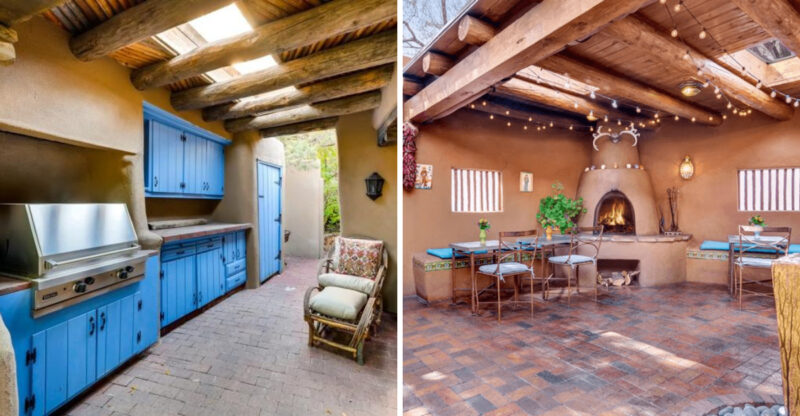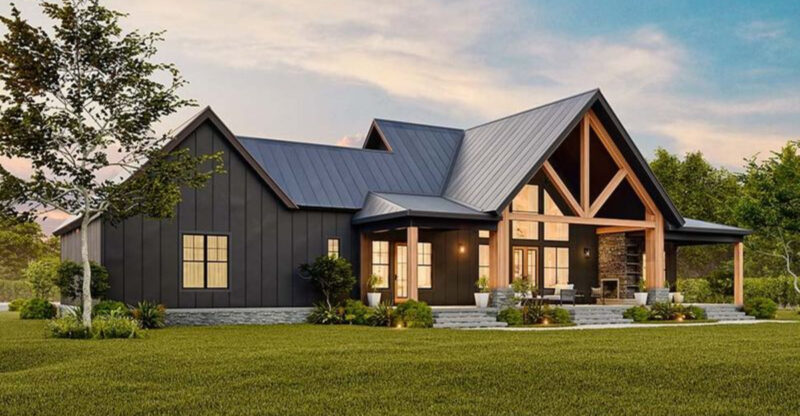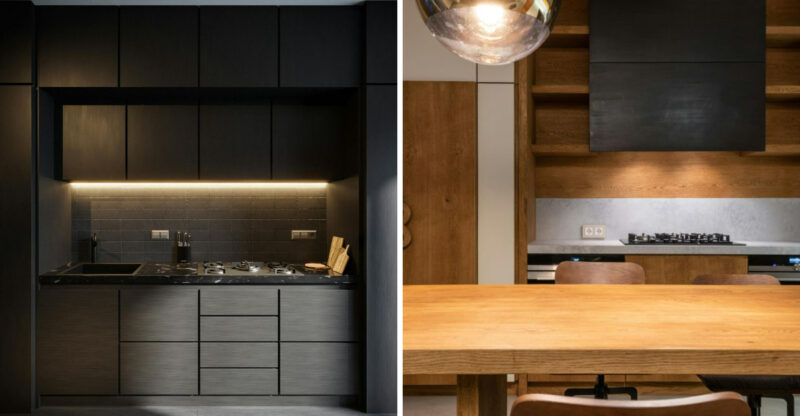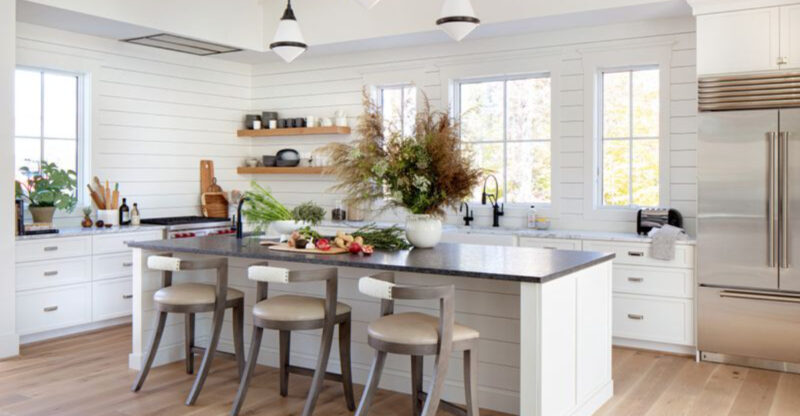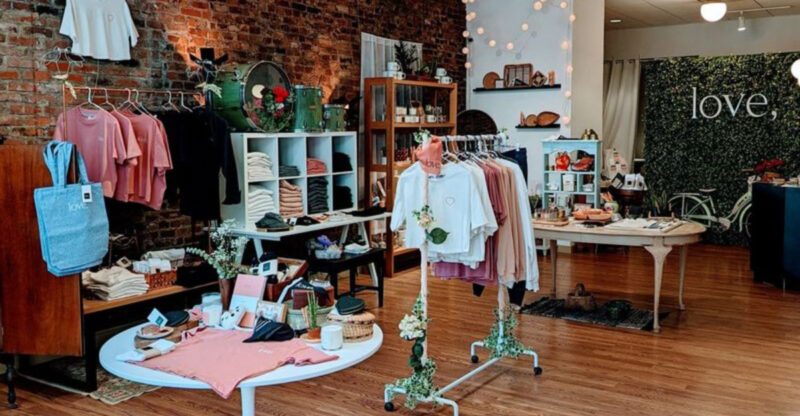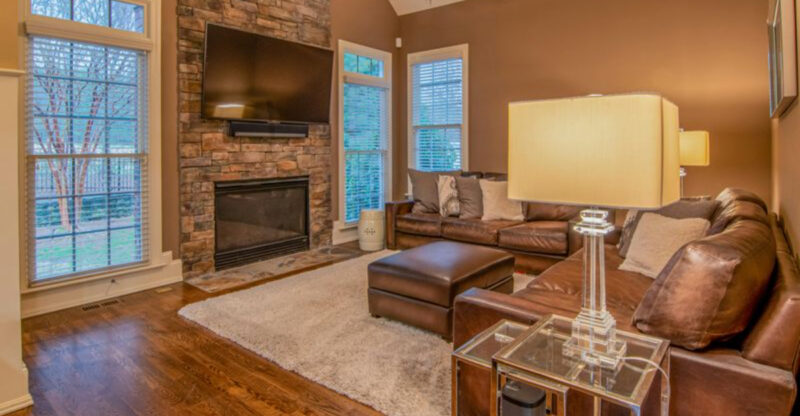17 Ways New Floors Could Give Every Room A Boost
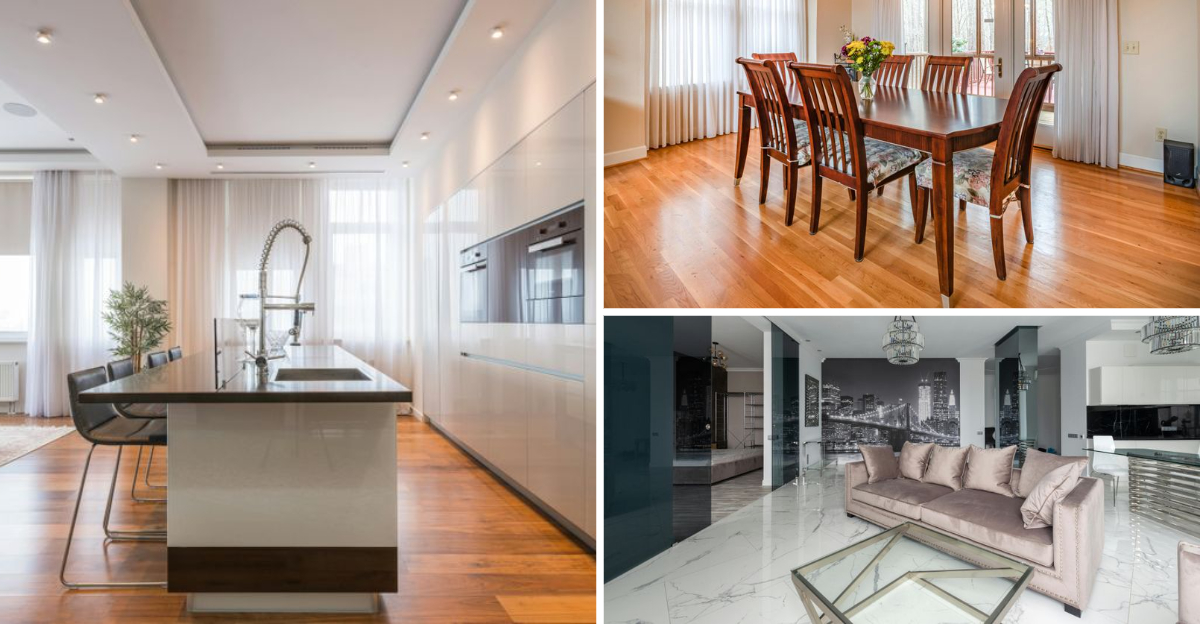
Sometimes the key to a room’s transformation isn’t on the walls or in the furniture it’s underfoot. Fresh flooring can instantly refresh a space, making it feel brighter, larger, or more cohesive.
While results vary depending on your home’s layout and existing surfaces, investing in new floors is one of the most noticeable ways to elevate a room’s style and even boost your property’s value.
1. Installing wide-plank hardwood
Wide-plank hardwood creates an immediate sense of luxury that narrow boards simply can’t match. The broader surface showcases wood grain patterns beautifully, making each plank feel like a work of art underfoot.
Rooms instantly appear larger and more cohesive with these statement floors. The fewer seam lines create a cleaner, more expansive look that’s particularly striking in smaller spaces.
I’ve noticed wide planks work especially well in living rooms and master bedrooms, where their grand scale matches the importance of these gathering spaces. They pair wonderfully with both modern and rustic décor, offering incredible versatility for years to come.
2. Using light-colored laminate
Light-colored laminate floors can make even the smallest rooms feel airy and expansive. Their reflective quality bounces natural light around, instantly brightening dark corners and creating the illusion of more square footage.
Maintenance is a breeze compared to real wood spills wipe right up, and scratches are less visible on lighter surfaces. For busy households with kids or pets, this practical choice stands up to daily wear while maintaining its good looks.
The affordability factor can’t be overlooked either. You’ll get the appearance of expensive hardwood at a fraction of the cost, leaving room in your budget for other decorative touches that complete your room’s transformation.
3. Adding patterned tile
Patterned tiles inject personality and artistic flair into otherwise ordinary spaces. Bold geometric designs or vintage-inspired motifs can serve as the room’s focal point, eliminating the need for expensive artwork or accessories.
Entryways and bathrooms transform dramatically with these statement floors. The wow factor hits visitors immediately, setting the tone for your entire home’s design aesthetic.
Durability is another major advantage quality ceramic or porcelain patterned tiles can withstand decades of foot traffic without losing their visual impact. I’ve found that even when furniture arrangements change over time, these distinctive floors continue anchoring the space with their timeless appeal and conversation-starting patterns.
4. Choosing herringbone parquet
Herringbone parquet brings sophisticated European elegance to any room it graces. The distinctive zigzag pattern creates visual movement that draws the eye through the space, making modest rooms feel more dynamic and interesting.
This classic installation technique dates back centuries yet feels surprisingly fresh in modern contexts. When paired with contemporary furnishings, herringbone floors create that perfect tension between old-world craftsmanship and current design sensibilities.
Dining rooms especially benefit from this treatment, as the angular pattern creates an energetic foundation for entertaining spaces. The diagonal lines trick the eye into seeing more floor area, while the intricate arrangement speaks to thoughtful attention to detail throughout your home.
5. Incorporating reclaimed wood
Reclaimed wood floors tell stories through every dent, nail hole, and weathered patch. These character marks create instant history in new construction or add authentic period charm to older homes being restored.
Environmental benefits abound with this sustainable choice. By giving old barn wood, factory flooring, or vintage beams a second life, you’re reducing demand for new timber while preserving the unique patina that only decades of use can create.
Each board’s varying width, color, and texture creates a one-of-a-kind floor impossible to replicate with new materials. I’ve found these floors particularly magical in family rooms and studies, where their warmth and character foster a sense of comfort and timelessness that manufactured options simply can’t match.
6. Adding luxury vinyl tiles
Luxury vinyl tiles have revolutionized affordable flooring with their incredible realism. Today’s technology creates surfaces virtually indistinguishable from natural stone or hardwood, complete with textured surfaces that mimic the real thing.
Waterproof properties make these tiles perfect for bathrooms, basements, and kitchens where moisture resistance matters. Spills and humidity that would damage natural materials have zero effect on these engineered alternatives.
Installation flexibility is another game-changer. Many styles come with click-lock systems allowing for floating installation without adhesives. This means you can completely transform a room in a weekend DIY project, saving on professional installation costs while still achieving professional-looking results that will withstand years of family life.
7. Choosing dark-stained oak
Dark-stained oak floors create dramatic contrast against light walls and furniture, instantly adding sophistication to any space. The rich, deep tones establish a solid foundation that anchors the room and creates a sense of permanence.
Hiding imperfections is another practical advantage. Dust, small scratches, and minor debris are far less visible on darker surfaces, meaning less obsessive cleaning for busy households.
These floors particularly shine in formal dining rooms and studies where their stately presence complements traditional furnishings. While they do show footprints more readily in high-traffic areas, this is easily managed with weekly maintenance. The timeless appeal of dark oak ensures your investment will remain stylish through changing design trends.
8. Installing chevron-patterned floors
Chemvron-patterned floors create dynamic visual energy with their distinctive V-shaped arrangement. Unlike herringbone, where pieces meet at 90-degree angles, chevron boards are cut at precise angles to form continuous zigzags that draw the eye forward.
This directional quality makes chevron particularly effective in hallways and entryways, where it naturally guides movement through the space. The pattern adds architectural interest to even the simplest rooms, eliminating the need for elaborate wall treatments.
Though traditionally associated with grand European apartments, modern interpretations in lighter woods or even engineered materials have made this luxurious look more accessible. I’ve seen stunning contemporary spaces where chevron floors provide just enough visual texture without overwhelming minimalist décor.
9. Using concrete with a polished finish
Polished concrete floors bring industrial chic into residential spaces with their sleek, minimalist appearance. The transformation from utilitarian material to design statement happens through a multi-step grinding process that reveals aggregate and creates a glass-like shine.
Temperature regulation is a hidden benefit concrete’s thermal mass naturally absorbs heat during the day and releases it slowly at night. This passive solar property can reduce energy bills in properly designed homes.
Customization options are nearly endless with stains, dyes, and decorative scoring patterns available. I’ve seen stunning results in open-concept living areas where the seamless surface flows uninterrupted from room to room, creating visual continuity that makes the entire space feel larger and more cohesive.
10. Adding terrazzo tiles
Terrazzo tiles bring playful sophistication with their distinctive speckled appearance. These composite materials combine marble, quartz, glass, or other aggregates suspended in a cement or resin base, creating endless color and pattern possibilities.
Originally found in Italian palaces, today’s terrazzo has evolved into a designer favorite for adding personality to modern spaces. The multicolored flecks provide a perfect opportunity to pull accent colors for other elements in your room.
Durability is terrazzo’s superpower these floors can literally last generations with proper care. While the initial investment may be higher than some options, the longevity makes it economical over time. Entryways and kitchens particularly benefit from this hard-wearing surface that maintains its distinctive beauty despite heavy use.
11. Installing floating floors
Floating floors offer remarkable installation flexibility without permanent adhesion to the subfloor. This ingenious system allows pieces to click together and “float” above existing surfaces, making it perfect for rentals or situations where you want future flexibility.
Quick installation means less disruption to your daily life. Most rooms can be transformed in a single weekend, even by DIY homeowners with basic skills and tools.
The air gap beneath these floors provides additional insulation benefits, helping rooms maintain comfortable temperatures and reducing energy costs. I’ve found floating floors particularly valuable in basements or rooms with minor subfloor imperfections, as the system can bridge small inconsistencies that would telegraph through glued-down materials.
12. Adding natural stone tiles
Natural stone tiles bring the outdoors in with their organic beauty and one-of-a-kind patterning. Each piece tells a geological story whether it’s marble’s elegant veining, slate’s subtle color variations, or travertine’s distinctive porous texture.
Thermal properties make stone an excellent partner for radiant heating systems. The material efficiently conducts and retains warmth, creating luxuriously comfortable floors in bathrooms and kitchens during colder months.
Longevity is perhaps stone’s greatest asset. These floors literally last for generations with proper sealing and maintenance. I’ve walked through European buildings with original stone floors hundreds of years old that continue to exude timeless beauty. This connection to history and permanence creates a sense of substance that manufactured materials simply cannot replicate.
13. Installing engineered hardwood
Engineered hardwood delivers real wood beauty with enhanced stability in environments where solid hardwood might warp. The clever construction features a genuine hardwood veneer bonded to multiple layers of plywood running in different directions.
This cross-grain configuration resists expansion and contraction during seasonal humidity changes. Basements, kitchens, and rooms with radiant heat systems particularly benefit from this dimensional stability.
Installation options provide flexibility these boards can be nailed down like traditional hardwood, glued directly to concrete, or installed as a floating floor depending on your situation. I appreciate how engineered products make real wood possible in previously challenging spaces, allowing for design continuity throughout multi-level homes without compromising on authentic wood grain beauty.
14. Adding cork underlay for comfort
Cork underlay transforms ordinary floors into comfort zones by adding a springy, cushioned layer beneath your visible flooring. This hidden hero reduces fatigue during long periods of standing in kitchens or craft rooms.
Thermal insulation is another significant benefit cork naturally resists heat transfer, keeping floors warmer in winter and cooler in summer. This can translate to noticeable energy savings over time, especially in rooms above unheated spaces.
Sound dampening properties make cork underlay particularly valuable in multi-story homes or apartments. Footsteps, dropped items, and general living noises are significantly muffled, creating more peaceful environments for everyone. While invisible once your finished flooring is installed, this simple addition pays comfort dividends daily.
15. Using waterproof flooring in kitchens
Waterproof flooring eliminates the anxiety of inevitable kitchen spills and splashes. Unlike traditional hardwood that can warp or laminate that can swell when wet, these specialized materials remain dimensionally stable even when exposed to standing water.
Modern technology has created waterproof options that convincingly mimic the appearance of virtually any material from realistic wood grains to natural stone textures. The visual compromise is minimal while the practical benefits are substantial.
Peace of mind comes from knowing that a forgotten ice maker leak or overflowing sink won’t result in costly floor replacement. For families with young children or busy cooks who prioritize function alongside aesthetics, waterproof kitchen flooring provides the perfect balance of beauty and worry-free performance.
16. Installing matte-finish hardwood
Matte-finish hardwood brings sophisticated understatement to any room with its low-luster appearance. Unlike high-gloss floors that can feel formal or dated, these subtle surfaces create a more relaxed, contemporary atmosphere.
Practical benefits abound matte finishes hide small scratches, dust, and footprints much more effectively than their shiny counterparts. This makes them ideal for busy households with children, pets, or frequent entertaining.
The natural-looking surface better showcases the wood’s authentic grain patterns and color variations. I’ve found these floors particularly stunning in Scandinavian-inspired spaces where the understated elegance complements minimalist décor. The matte treatment also works beautifully in historic homes, mimicking the natural patina of aged wood floors without sacrificing modern durability.
17. Adding warm-toned laminate
Warm-toned laminate instantly creates inviting, cozy atmospheres in living spaces and bedrooms. Honey, amber, and chestnut shades visually warm up north-facing rooms or spaces that receive limited natural light.
These mid-range tones strike the perfect balance dark enough to hide minor dirt between cleanings but light enough to prevent the room from feeling small or cave-like. The practical wear layer protects these beautiful colors from fading, even in sunny areas.
Affordability makes warm laminate particularly attractive for whole-house renovations where budget constraints might otherwise limit options. I’ve transformed entire homes with consistent warm-toned laminate throughout, creating flowing spaces that feel cohesive and thoughtfully designed while keeping costs manageable.

